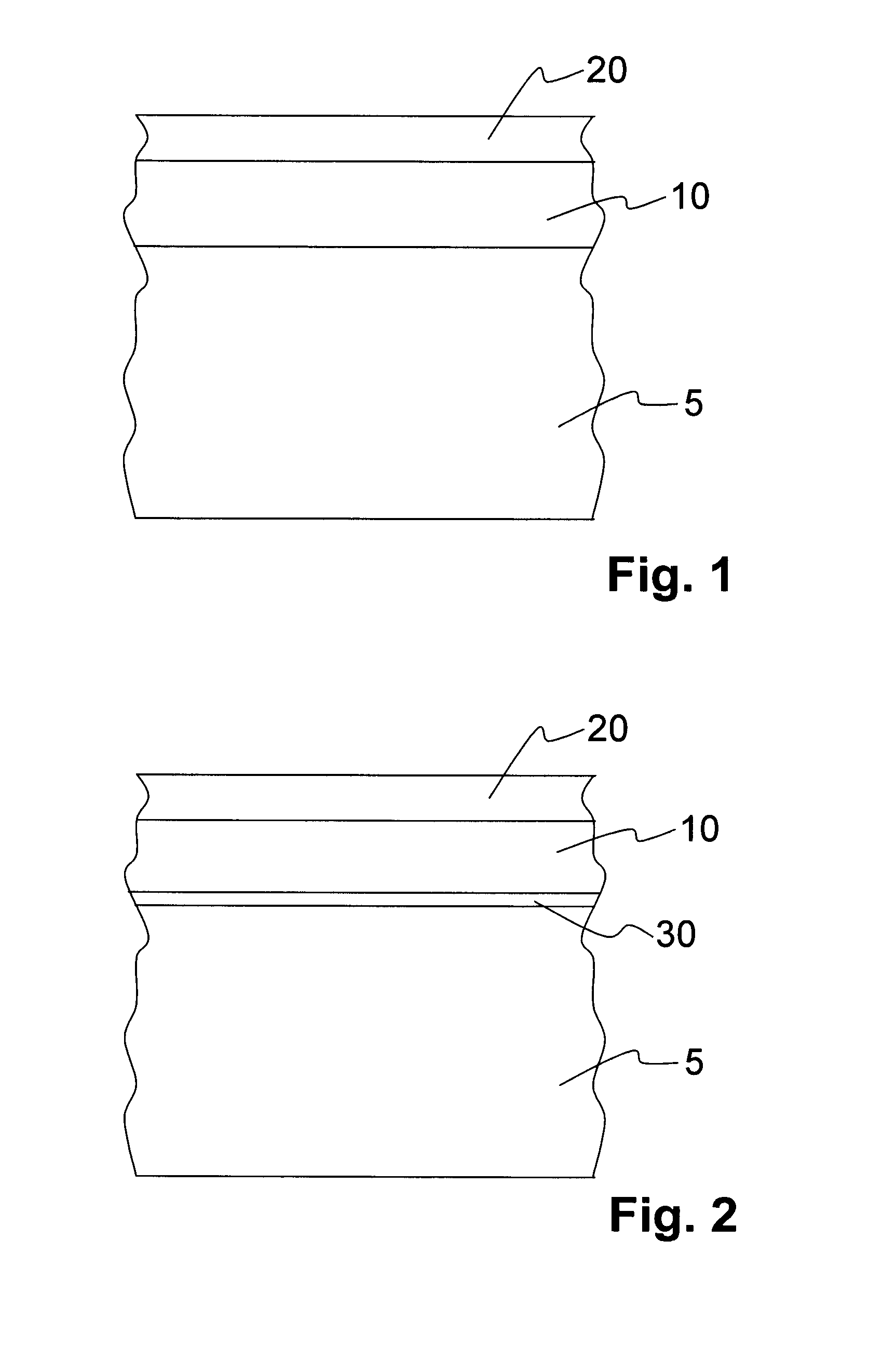Implant and method for producing the same
- Summary
- Abstract
- Description
- Claims
- Application Information
AI Technical Summary
Benefits of technology
Problems solved by technology
Method used
Image
Examples
Embodiment Construction
[0036]FIG. 1 shows a cross section of a part of the body of a first exemplary embodiment of an implant according to the invention. The implant is a stent, for example. A first layer 10 is arranged on the surface of the body 5, which first layer contains Ca ions and P ions and preferably has a layer thickness of between approximately 0.5 μm and approximately 10 μm.
[0037]The first layer 10 is composed, for example, of the following components: (in decreasing order)[0038]Magnesium phosphate (30-50% by weight)[0039]Calcium phosphate (30-40% by weight)[0040]Magnesium oxide (15-20% by weight)[0041]Magnesium carbonate (10-15% by weight)[0042]Magnesium hydroxide (10-15% by weight)[0043]Remainder (
[0044]The first layer 10 can be applied, for example, by means of a plasma chemical method at voltages between 250 and 500 V, current densities between 0.5 and 5 A / dm2, pulse frequencies between 100 Hz and 10 kHz and using an anticathode of stainless steel 1.4301 by treating the implant base body i...
PUM
| Property | Measurement | Unit |
|---|---|---|
| Length | aaaaa | aaaaa |
| Length | aaaaa | aaaaa |
| Length | aaaaa | aaaaa |
Abstract
Description
Claims
Application Information
 Login to View More
Login to View More - R&D
- Intellectual Property
- Life Sciences
- Materials
- Tech Scout
- Unparalleled Data Quality
- Higher Quality Content
- 60% Fewer Hallucinations
Browse by: Latest US Patents, China's latest patents, Technical Efficacy Thesaurus, Application Domain, Technology Topic, Popular Technical Reports.
© 2025 PatSnap. All rights reserved.Legal|Privacy policy|Modern Slavery Act Transparency Statement|Sitemap|About US| Contact US: help@patsnap.com


